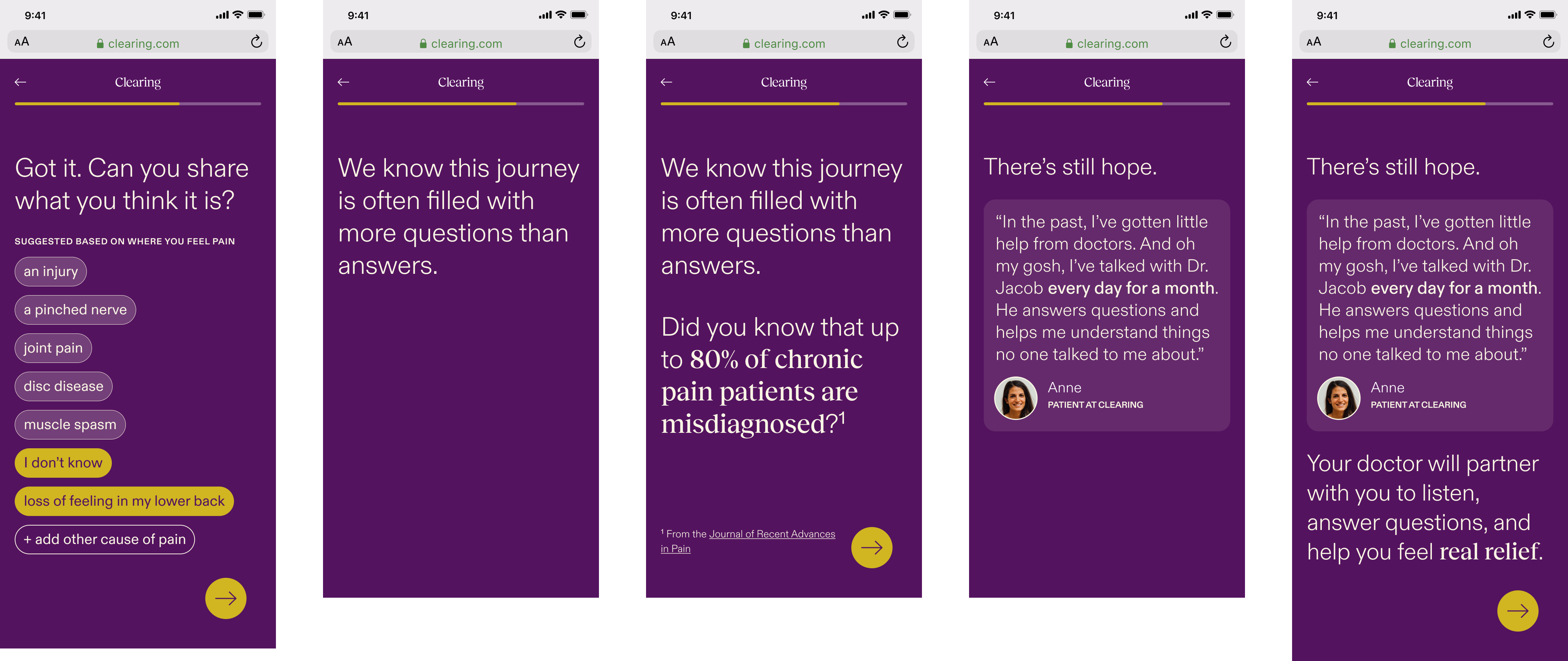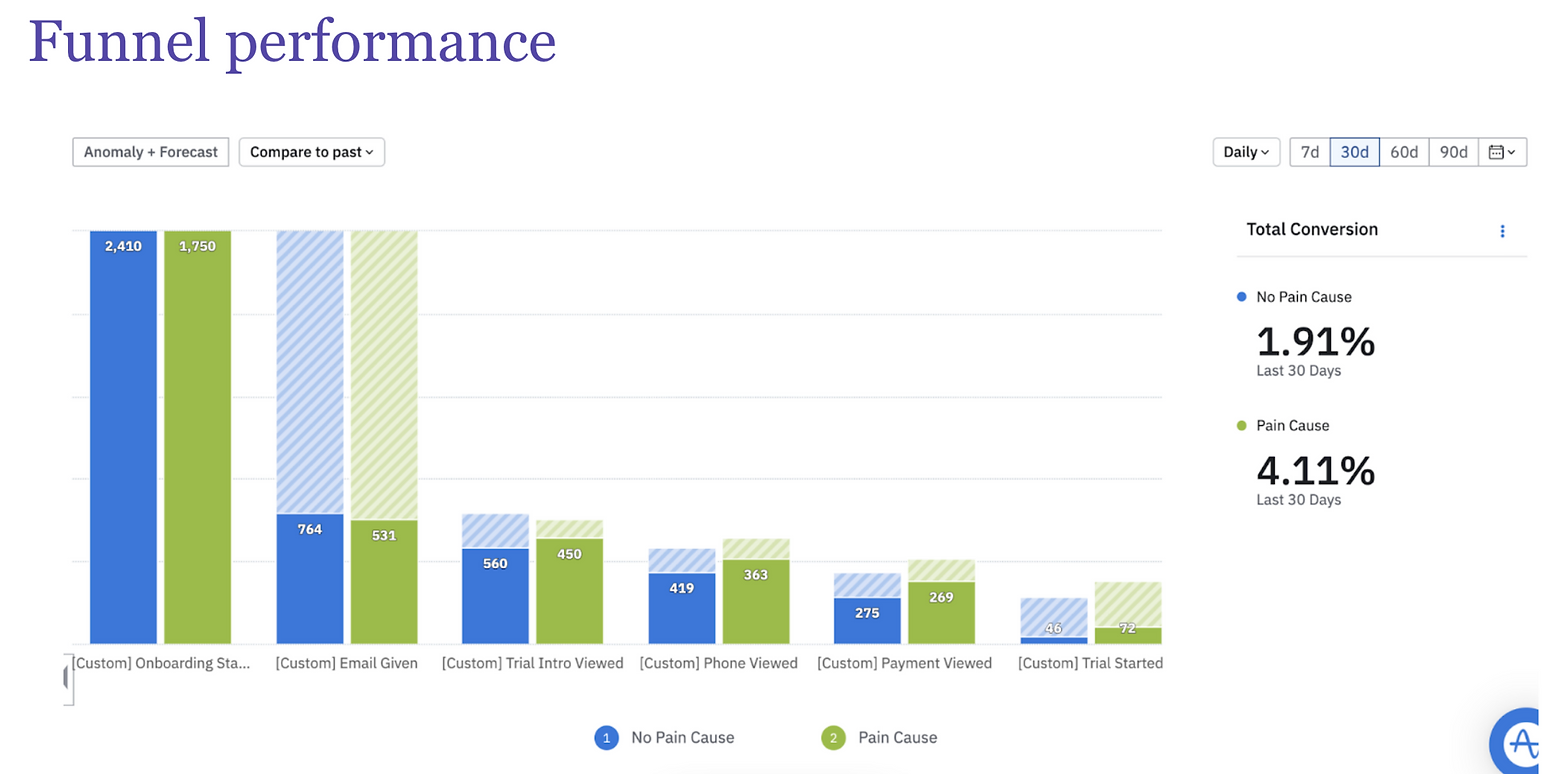Cause of Pain Test

After redesigning our onboarding experience and shifting our focus to be more patient-centric rather than product-centric, we quickly began running experiments to optimize our conversion funnel. One immediate insight was that we hadn’t gone far enough in personalizing the patient experience.
During user testing, patients expressed that they still felt unheard. A key discovery was that many patients valued their diagnosis deeply, as they had often seen multiple doctors without finding relief and were turning to Clearing as a last resort. In response, I designed a test that centered on this crucial aspect of the patient’s pain journey.
To frame the purpose of this test, we gathered baseline data and formulated a hypothesis on which to base our results.
Problem
Hypothesis
By building in a moment of legitimacy in response to ‘can you treat my type of pain?’ we believed that we could increase conversion rates because we are building enough trust with our patients for them to decide to give us a try
Goal
Higher buyer intent leading to overall higher conversion rates

After an initial discovery period to define our problem and hypothesis, I consulted with Dr. Jacob Hascalovici, our Chief Medical Officer, to discuss the types of conditions we can treat. He provided a list of conditions organized by the location of pain, which included both the conditions we currently treat and those we have the potential to treat.
What stood out to me was that many of these conditions appeared under multiple pain locations. This gave me the idea that we could enhance our credibility by highlighting potential causes of pain based on two factors: 1) the location where the patient reports feeling pain and 2) the most common conditions associated with that pain area.

I also considered how to communicate effectively with patients who are at different stages of their pain journey. We know that some patients have a clear diagnosis, while others have no idea what’s causing their pain, and still others have received multiple diagnoses over the years. Each of these patient groups has a unique perspective, so our approach to asking about the cause of their pain—and how we respond—needed to reflect these differences.
To address this, I decided to test framing our question as, ‘Do you know what’s causing your pain?’ with three options: ‘Yes,’ ‘No,’ and ‘It’s complicated.’ This approach allowed patients to provide more nuanced information, such as any accidents, injuries, or trauma that might be contributing to their pain, rather than limiting their responses strictly to a diagnosis.”

I conducted a week-long exploration process, user-testing different methods for collecting information about conditions and tailoring responses based on whether patients answered ‘Yes,’ ‘No,’ or ‘It’s complicated’ to our question about the cause of their pain. I decided to utilize existing components from our onboarding process, as we had already demonstrated that these patterns were user-friendly for our audience. Additionally, I developed a pain cause logic to limit the number of suggested conditions based on pain location to a maximum of six.

I developed a final solution to launch as an A/B test. The design process took approximately two weeks, followed by another two weeks for development and quality assurance. We ran the A/B test for about two weeks and achieved statistically significant results during that period.
Patients who experienced the new set of screens converted at a rate of 4.11%, compared to 1.91% with the previous screens—an improvement of 116%, which is statistically significant. When analyzing the conversion rate between the ‘Basic Info’ and ‘Trial’ steps, the new set of screens converted at 9.03%, compared to 3.47% with no screens—an increase of 97%, also statistically significant.
These results allowed us to confidently conclude that changes at the top of the funnel can have a lasting impact on the rest of the funnel by building trust and generating intent.





